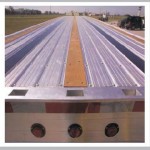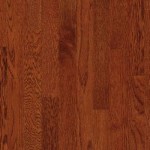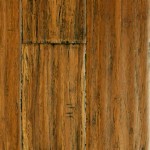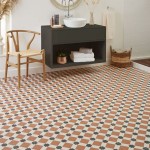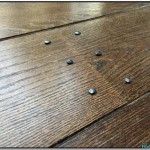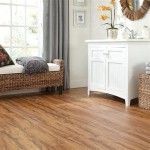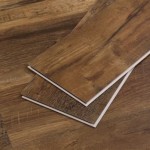Wood Veneer Flooring: A Comprehensive Overview
Wood veneer flooring, often marketed as engineered wood flooring with a thin layer of real wood, represents a popular choice in residential and commercial construction. It provides the aesthetic appeal of solid hardwood flooring at a potentially lower cost and with enhanced dimensional stability, mitigating some of the issues associated with solid wood’s susceptibility to moisture and temperature fluctuations. Understanding the construction, advantages, disadvantages, and maintenance requirements of wood veneer flooring is crucial for making informed decisions regarding its suitability for specific applications.
The core of wood veneer flooring is typically composed of multiple layers of plywood, high-density fiberboard (HDF), or particleboard. These layers are bonded together under high pressure, forming a stable and durable substrate. The top layer, the veneer, is a thin slice of real wood, usually ranging from 0.5mm to 6mm in thickness, depending on the quality and intended lifespan of the flooring. This veneer layer is what provides the visual characteristics of the flooring, allowing manufacturers to offer a wide variety of wood species, grains, and finishes.
Quality variations exist significantly within the wood veneer flooring market. Lower-end products often utilize thinner veneers and less durable core materials, resulting in reduced longevity and increased susceptibility to damage. Conversely, higher-quality options employ thicker veneers and more robust core constructions, offering improved resistance to wear, dents, and moisture. Therefore, careful consideration of the product specifications and manufacturer reputation is essential when selecting wood veneer flooring.
Key Point 1: Construction and Materials
The foundation of wood veneer flooring lies in its layered construction. The core material plays a critical role in the flooring's stability and resistance to moisture. Plywood cores, constructed from multiple layers of wood veneer glued together with alternating grain directions, tend to offer excellent structural integrity and moisture resistance. HDF cores, made from compressed wood fibers, provide a dense and stable base but may be more susceptible to moisture damage compared to plywood. Particleboard cores, the least expensive option, are generally less dense and offer lower moisture resistance. They should be avoided in areas prone to humidity or spills.
The veneer layer's thickness directly correlates with the flooring's durability and potential for refinishing. Thicker veneers, typically 3mm or greater, allow for multiple refinishing cycles, extending the lifespan of the flooring. Thinner veneers, less than 2mm, offer a lower initial cost but may not be refinishable, requiring replacement once the surface finish is worn or damaged. The species of wood used for the veneer also influences the flooring's appearance and hardness. Common options include oak, maple, hickory, walnut, and birch, each offering unique grain patterns and color variations. Exotic species, such as Brazilian cherry or bamboo, are also available, providing distinct aesthetic choices.
The manufacturing process involves bonding the veneer layer to the core material using adhesives. The type and quality of adhesive used are crucial for ensuring long-term bond strength and preventing delamination. High-quality adhesives, such as polyurethane glues, offer superior moisture resistance and bond strength compared to cheaper alternatives. Furthermore, the finishing process involves applying several coats of protective finish to the veneer layer. These finishes, typically polyurethane or acrylic-urethane, protect the wood from scratches, stains, and UV damage. The number and type of finish coats influence the flooring's overall durability and maintenance requirements.
Understanding the composition of the core and the thickness of the veneer is critical in assessing the long-term durability and value of wood veneer flooring. Specifying the necessary thickness based on the intended use, foot traffic, and moisture conditions is essential to optimize performance and longevity.
Key Point 2: Advantages and Disadvantages
Wood veneer flooring offers several advantages over solid hardwood flooring. One significant benefit is its dimensional stability. The layered construction of the core material minimizes the expansion and contraction that occur with solid wood due to changes in humidity and temperature. This makes wood veneer flooring suitable for installation in areas where solid hardwood might be problematic, such as basements or over concrete slabs. Furthermore, the manufacturing process allows for wider planks compared to solid hardwood, creating a more contemporary and seamless look.
The cost of wood veneer flooring is typically lower than solid hardwood flooring, particularly for high-end wood species. This cost savings is due to the efficient use of wood resources, as only a thin layer of real wood is required for the veneer. Installation is often simpler and faster than solid hardwood, especially with click-lock systems that eliminate the need for nails or glue. This can further reduce overall project costs. Wood veneer flooring is also available in a wide range of styles, colors, and finishes, providing greater design flexibility compared to solid hardwood.
However, wood veneer flooring also has its limitations. The thin veneer layer is susceptible to scratches and dents, particularly in high-traffic areas. While thicker veneers can be refinished, the number of refinishing cycles is limited compared to solid hardwood. Once the veneer layer is worn through, the flooring must be replaced. Moisture damage can also be a concern, especially with lower-quality products that utilize less moisture-resistant core materials. Spills should be cleaned up promptly to prevent water from seeping into the core and causing swelling or warping. Although it is more stable than solid hardwood, excessive moisture can still cause problems.
Another disadvantage is the perceived lower value compared to solid hardwood. While wood veneer flooring offers numerous practical benefits, some homeowners prefer the prestige and long-term investment of solid wood. Finally, repairing damaged areas of wood veneer flooring can be challenging. Replacing individual planks or boards often requires specialized tools and techniques to ensure a seamless match. Matching the finish of replacement pieces to the existing flooring can also be difficult, potentially resulting in visible seams or color variations.
Key Point 3: Installation and Maintenance
Proper installation is crucial for ensuring the long-term performance and appearance of wood veneer flooring. The subfloor must be clean, level, and dry before installation begins. Any imperfections in the subfloor can telegraph through the veneer layer, creating unevenness or squeaking. A moisture barrier should be installed over concrete slabs to prevent moisture from migrating into the flooring. Wood veneer flooring can be installed using various methods, including floating, gluing, or nailing. Floating installations, which utilize click-lock systems, are the most common and easiest to install. They allow the flooring to expand and contract freely without being anchored to the subfloor.
Glued-down installations provide a more secure and stable bond between the flooring and the subfloor, minimizing movement and noise. However, they require specialized adhesives and techniques. Nailing or stapling is typically used for solid hardwood flooring but can also be used for some types of wood veneer flooring with thicker cores. Proper nail or staple placement is essential to prevent damage to the flooring and ensure a secure hold. Following the manufacturer's instructions carefully is crucial for a successful installation, regardless of the chosen method.
Maintaining wood veneer flooring requires regular cleaning and care to protect the surface finish and prevent damage. Sweeping or vacuuming regularly is essential to remove dirt and debris that can scratch the finish. Damp mopping with a microfiber mop and a pH-neutral cleaner is recommended for deeper cleaning. Avoid using excessive water or harsh chemicals, as these can damage the finish and cause swelling or warping. Using walk-off mats at entrances and area rugs in high-traffic areas can help protect the flooring from wear and tear.
Protecting the flooring from scratches and dents is also important. Lift furniture instead of dragging it, and use felt pads under furniture legs to prevent scratches. Avoid wearing high heels on the flooring, as they can cause dents and scratches. Regularly inspect the flooring for signs of damage, such as scratches, dents, or water stains. Address any issues promptly to prevent them from worsening. Refinishing the flooring may be necessary periodically to restore its appearance and protect the veneer layer. The frequency of refinishing depends on the thickness of the veneer layer and the amount of foot traffic.
In conclusion, wood veneer flooring presents a viable alternative to solid hardwood, offering a balance of aesthetics, durability, and cost-effectiveness. However, careful consideration of the core material, veneer thickness, installation method, and maintenance requirements is essential for ensuring long-term satisfaction. Choosing a reputable manufacturer and understanding the specific characteristics of the product are crucial for making an informed decision and maximizing the lifespan of the flooring.

What Is Wood Veneer Spc Flooring China Manufacture Decno

Eagle View Engineered Hardwood Floor 27 Sq Ft Per Carton

The Benefits Of Veneer Wood Flooring Kährs

What Is Veneer Flooring Advantages Disadvantages Options

What Is Veneer Flooring Advantages Disadvantages Options

Install Tongue And Groove Wood Veneer Flooring

Engineered Flooring Vs Laminate Everything You Need To Know Forbes Home

Brown Veneer Wooden Flooring Size Dimension 197 X 1220 Mm Thickness 8 At Rs 75 Square Feet In Bengaluru

The Ultimate Guide To Engineered Hardwood Flooring Precision

Hardwood Vs Engineered Wood Flooring Which Is Best For You Forbes Home
Related Posts

